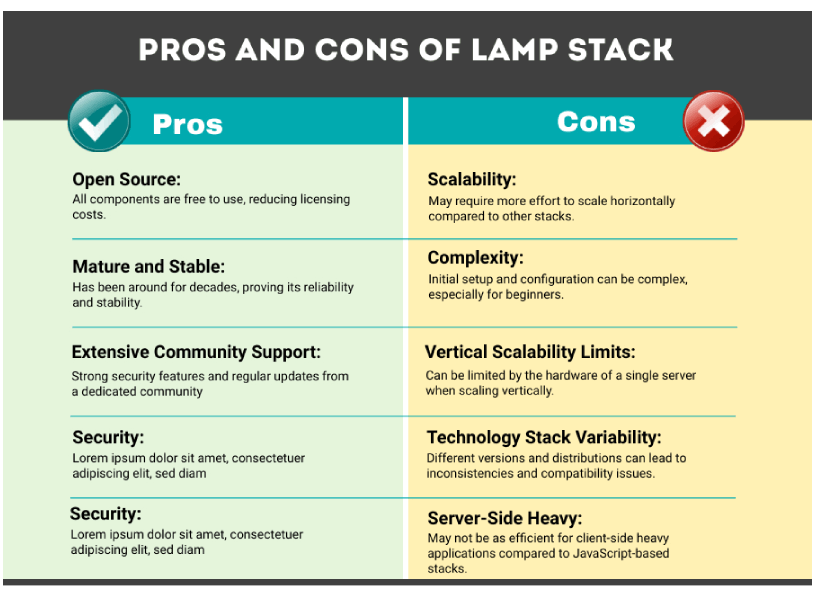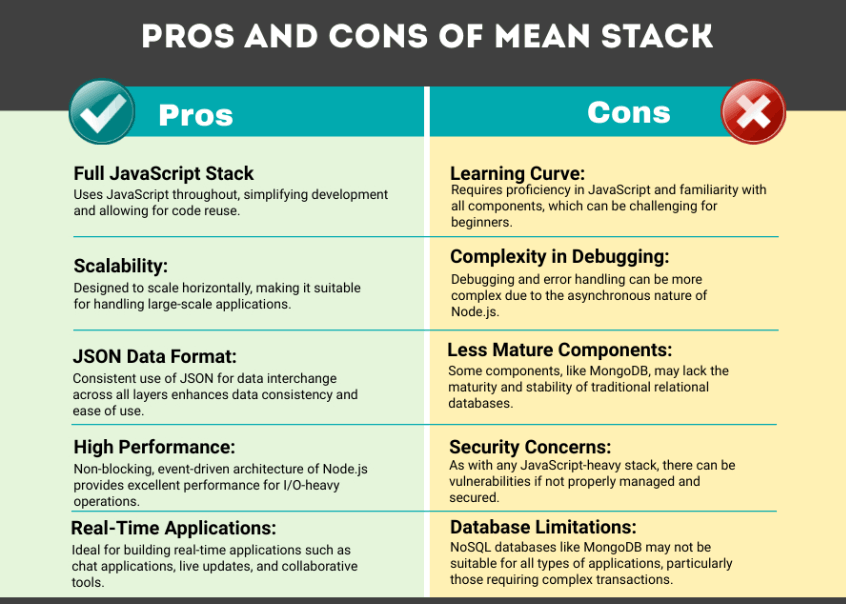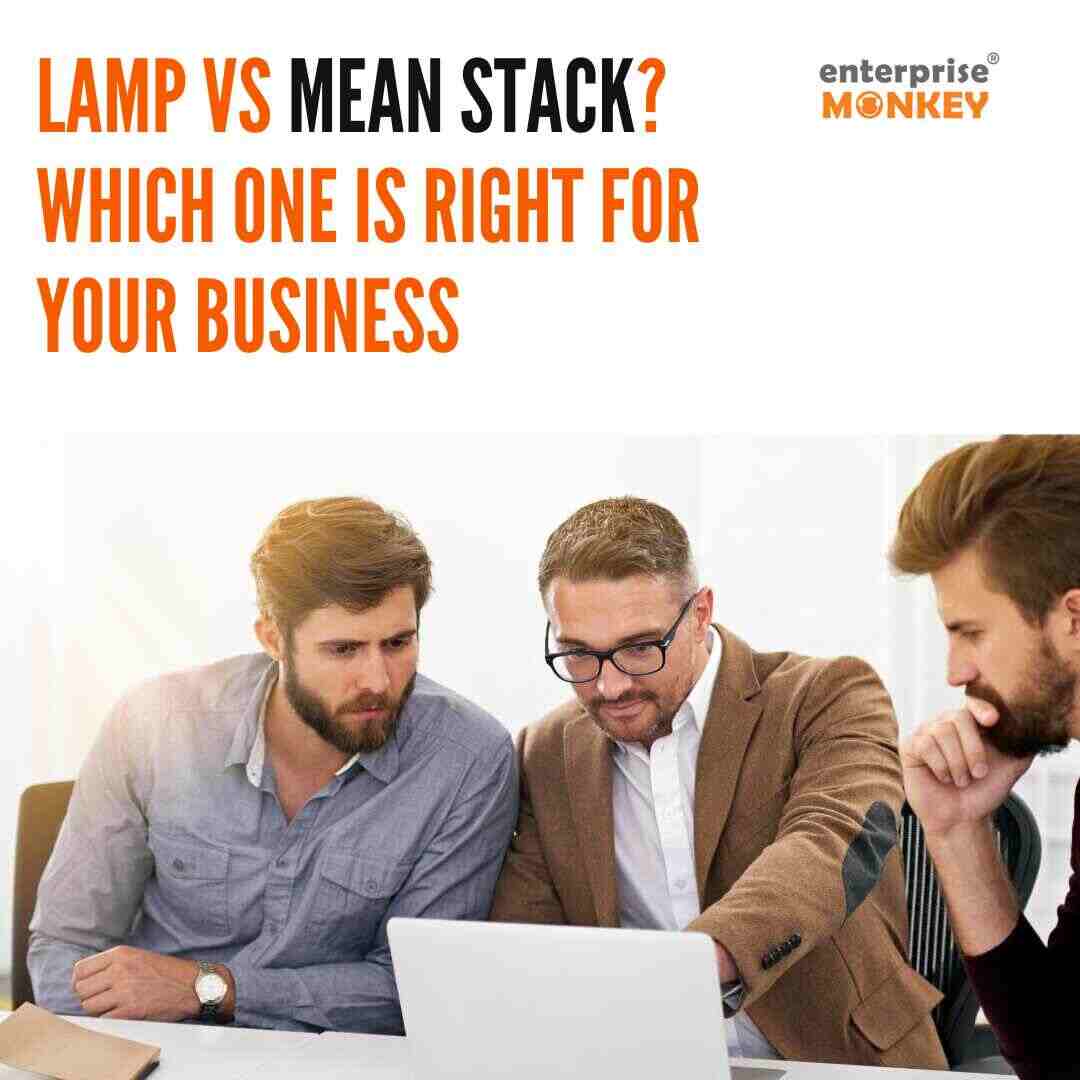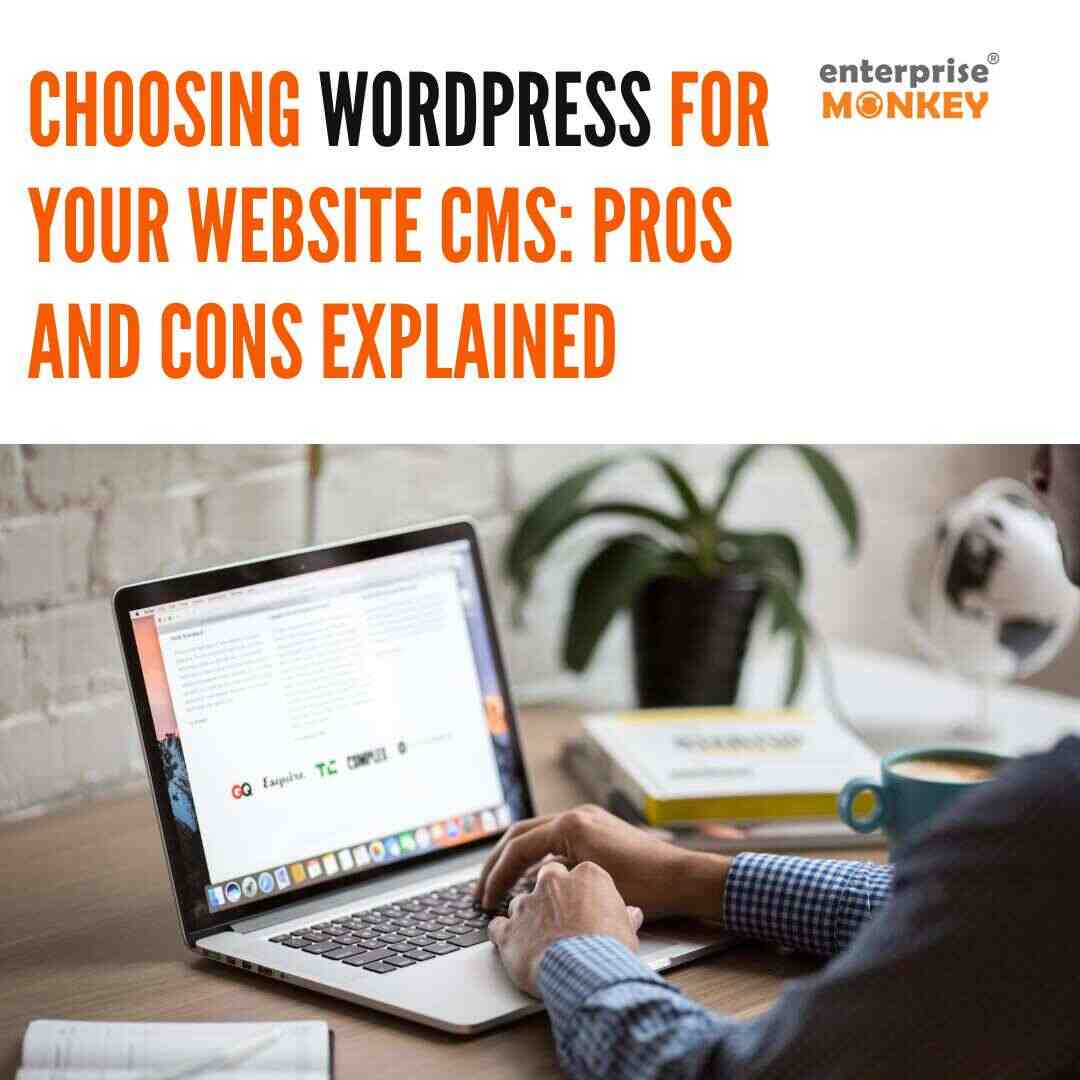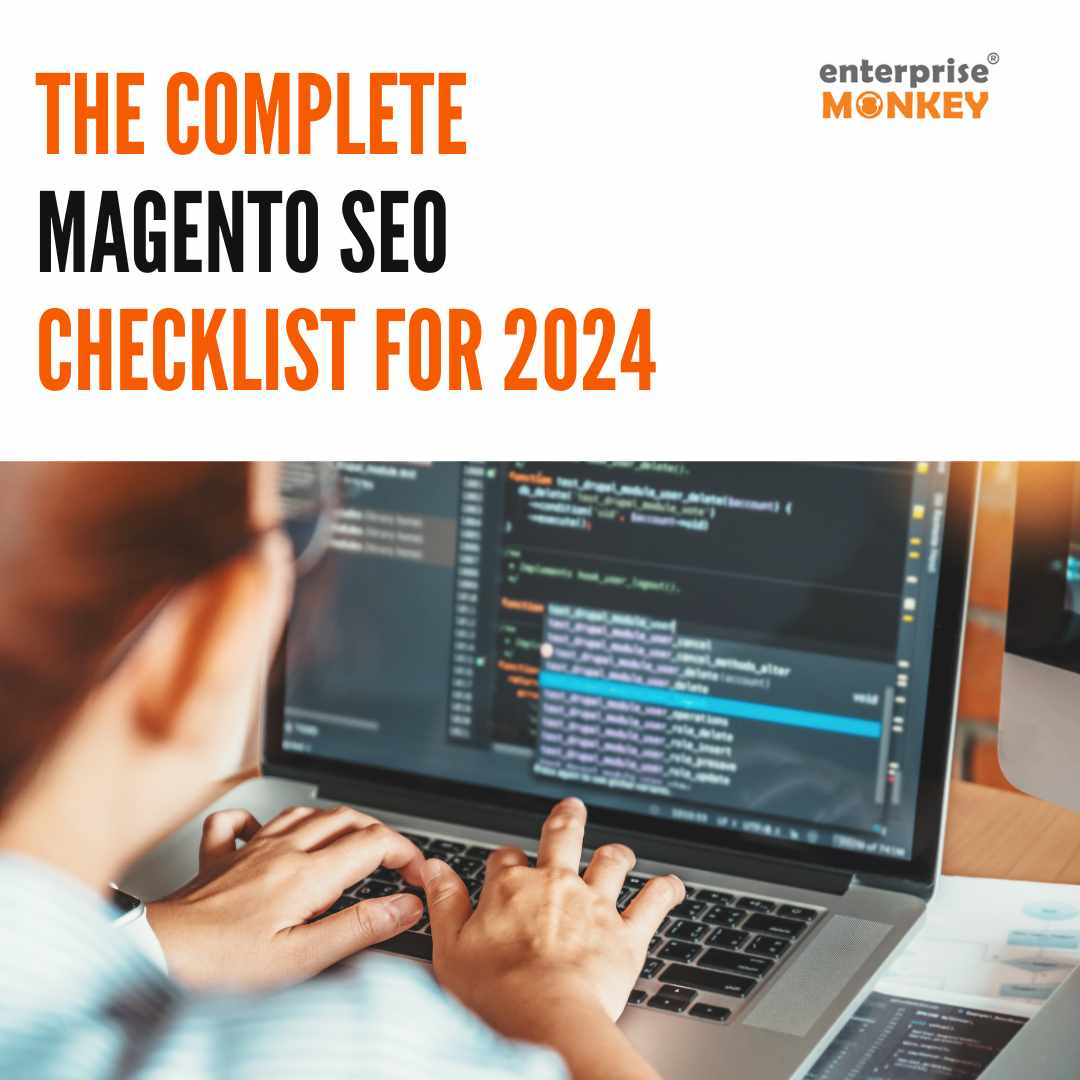Businesses nowadays apprehend the importance of web application for their constant growth. With 95% of the audience accessing the web through their mobiles, the development of web application undeniably brings perpetual expansion of the enterprises.
However, starting a new project introduces its own set of decision dilemmas. One of which is selecting the best stack for building efficient, scalable, and maintainable application for your business.
A “stack” refers to a set of technologies that work together to build and run web applications. Each stack layer plays a specific role in the development and deployment process, typically encompassing everything from the server and database to the front-end interface.

Two popular stacks that often come up in this discussion are the LAMP and MEAN stacks.
Each stack; LAMP and MEAN have their distinct strengths and use cases, making it difficult to choose the best stack for your web app development. Therefore, it is essential to understand their differences and determine which one suits best to your project’s requirements.
Therefore, we have come up with this blogpost to figure out each stack carefully before coming on to final consensus. Here, you’ll not only get the detailed explanation to each stack, but also, get an idea about their differences to help you make an informed decision.
What is LAMP Stack?
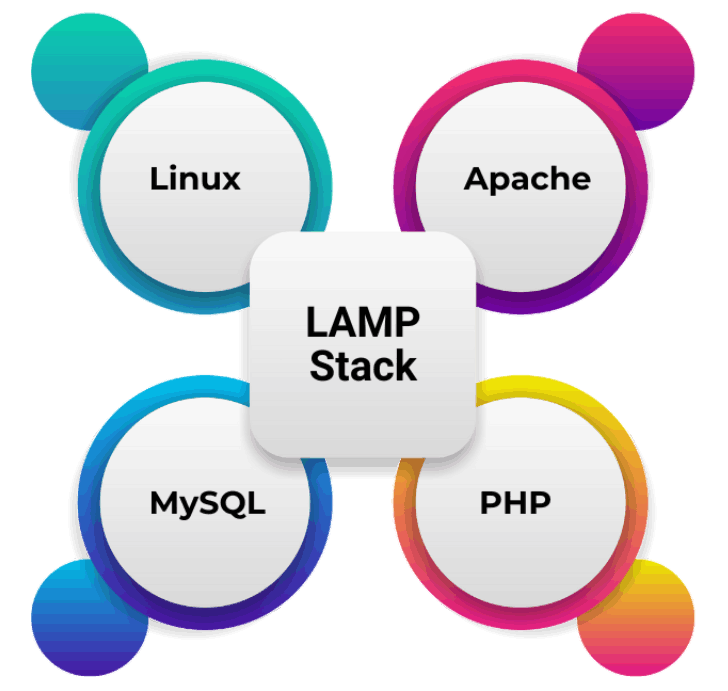
LAMP is a traditional and popular set of widely used open-source software technologies, frequently used as a building block for a website or web app creation. It uses a combination of software subsystems to perform tasks independently, i.e. without the need of any external data or software.
The Main Components of LAMP Stack are:
- Linux: Operating System – Linux is the operating system that forms the foundation of the LAMP stack. It manages the hardware resources and provides a stable, secure environment for the other components to operate.
- Apache: Web Server – Apache is the web server software responsible for handling HTTP requests from clients (such as web browsers) and serving web pages to them.
- MySQL: Database – MySQL is the relational database management system (RDBMS) that stores and manages the data for web applications.
- PHP/Perl/Python: Server-Side Programming Language – These are server-side scripting languages used to create dynamic content by processing requests, interacting with the database, and generating HTML for web pages.
The combination of these components in LAMP works together to create a cohesive stack. It allows developers to create dynamic web pages that can store and manage data, making it a popular choice for eCommerce platforms, content management systems, and many other web applications.
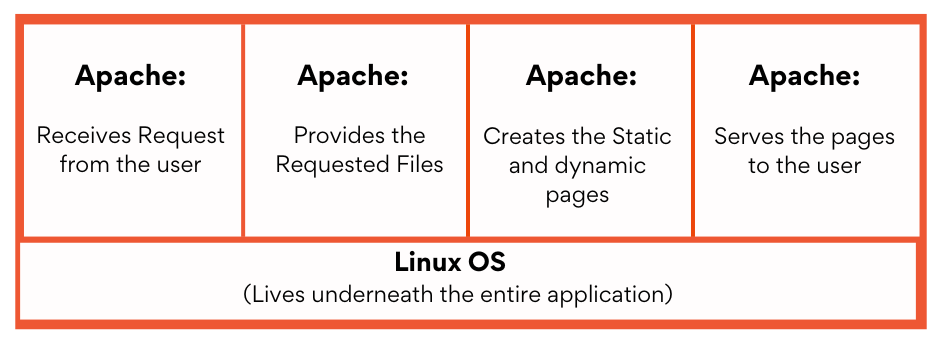 [Source IBM]
[Source IBM]
Figure1: An example showing the web app response towards the user’s request for information. The flow of information is across the LAMP stack which includes opening of the application, logging in and performing search activities within the app.
| Do you Know!
The popular websites like Wikipedia and WordPress are built with LAMP Stack technology. |
What is MEAN Stack?
Where LAMP is a traditional technology, MEAN is a more advanced and recently used tech stack. It is an open-source JavaScript-based technology stack used for developing dynamic web applications.
MEAN is a popular tech stack amongst the large scale entities, particularly those companies that run real-time data driven applications. Its scalability, flexibility and ease of use makes it a common stack used by many big brands.
The Main Components of MEAN Stack are:
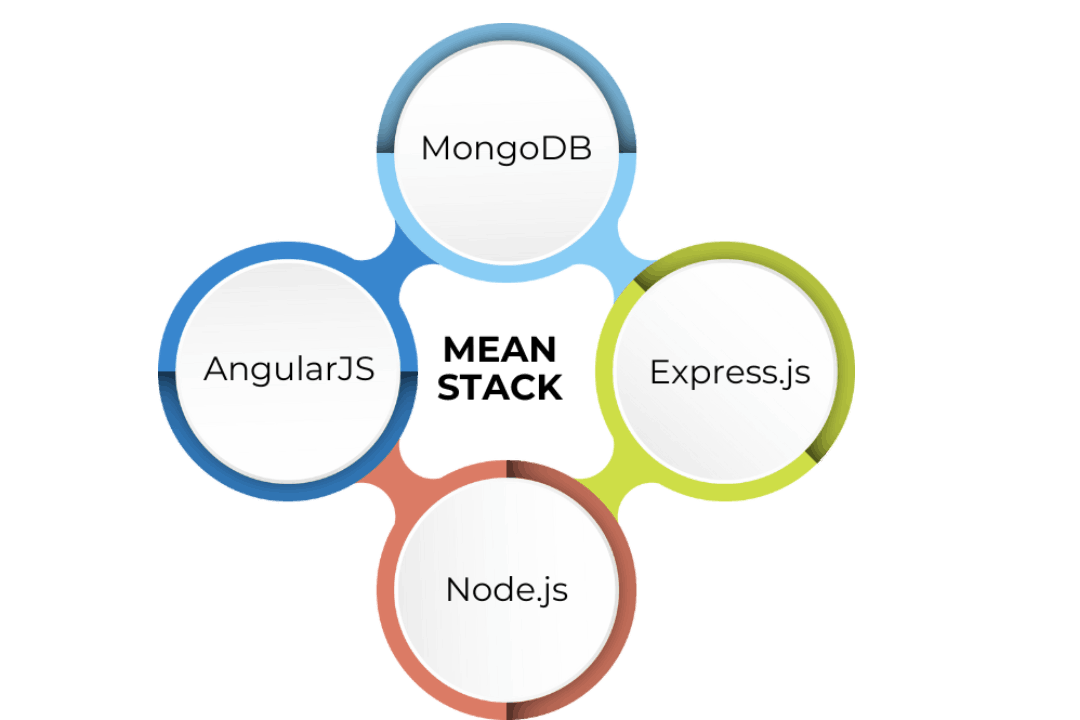
- MongoDB: The NoSQL database – MongoDB is a NoSQL database that stores data in a flexible, JSON-like format called BSON (Binary JSON).
- Express.js: The web application framework – Express.js is a lightweight and flexible web application framework for Node.js, designed to build robust web applications and APIs.
- AngularJS/Angular: The front-end framework – AngularJS (or its successor, Angular) is a front-end framework developed by Google for building dynamic, single-page applications (SPAs).
- Node.js: The runtime environment – Node.js is a server-side runtime environment that enables the execution of JavaScript code outside of a web browser.
MEAN stack is easy to use technology, uses the advanced features in your web like social sharing, chat and live streaming by implementing a few codes. Since everything is based on JavaScript, developers can use the same language throughout the development process.
This streamlines development and fosters a full-stack approach, where a single developer can work on both the front end (user interface) and back end (server-side logic) of the application. MEAN stacks are ideal for real-time, single-page applications (SPAs) and data-intensive web projects.
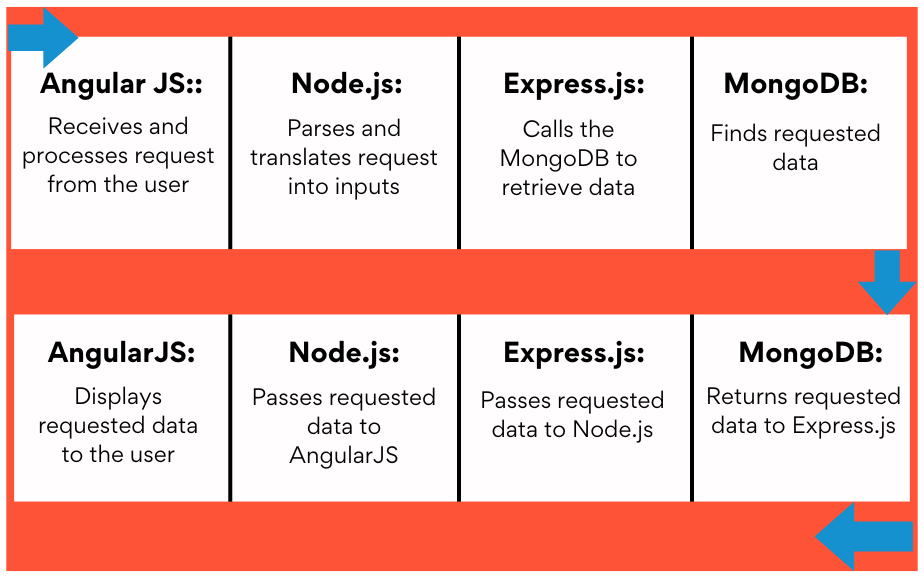
[Source: IBM]
Figure 2: An example of web application responses towards user’s request for information across MEAN Stack. It is to be noted that AngularJS is replaceable by React.js. However, the Node.js environment is irreplaceable for MEAN Stack.
| Do you Know!
Popular web apps like Netflix and Spotify use MEAN Stack technology for their application. |
Comparison Between LAMP and MEAN Stack
Let us now see the table below that provides a detailed comparison of the LAMP and MEAN stacks, highlighting their strengths and potential drawbacks based on various factors essential for web development.

LAMP Stack v/s MEAN Stack: Which One Should You Choose?
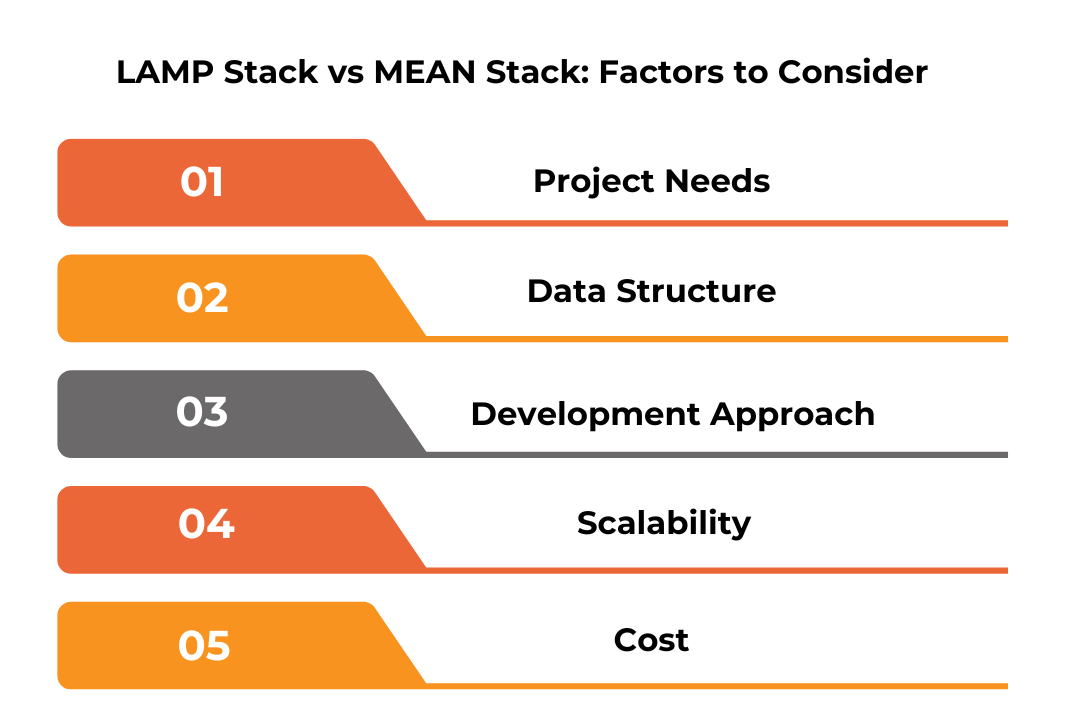
Choosing the right technology stack is a critical decision that impacts your web application’s development process, scalability, and performance. Let’s examine the key factors to consider when deciding which stack is best for your business:
Consider Your Project Needs
Choosing the right technology stack hinges on understanding your project’s core functionalities.
For traditional websites or e-commerce platforms that prioritize content management and structured data, LAMP excels with its familiar relational databases and established tools.
On the other hand, if your project demands real-time features, data-intensive operations, or a modern web application, MEAN’s scalability and focus on JavaScript provide a better technical foundation.
Real Time Application or Data Heavy Projects?
The type of data your project needs to manage significantly impacts the choice between LAMP and MEAN stacks. Let us see how:
- LAMP: Utilizes MySQL, a relational database. MySQL excels at storing data in well-defined tables with fixed structures, making it ideal for content-driven websites and e-commerce platforms where information like product details, user accounts, and blog posts has clear relationships.
- MEAN: Leverages MongoDB, a NoSQL database. NoSQL offers a flexible schema, meaning data doesn’t have to conform to a rigid structure. This is perfect for projects that handle constantly evolving data or large amounts of unstructured data, like social media feeds or sensor readings.
What is Your Development Approach?
The development approach between LAMP and MEAN hinges on your team’s skill set and project complexity.
LAMP utilizes a back-end-focused approach with PHP as the workhorse, while HTML, CSS, and JavaScript handle the front end. This separation is ideal for larger teams with dedicated back-end and front-end developers, and the vast pool of PHP developers makes finding talent easier.
Meanwhile, MEAN dives into full-stack development, using JavaScript for both the server-side logic and the user interface. This streamlined approach can benefit smaller teams or projects where everyone is comfortable with JavaScript.
However, finding full-stack JavaScript developers might be more challenging than LAMP’s separate skill sets.
Scalability is a Priority?
The anticipated growth of your web application is a critical factor when choosing between LAMP and MEAN stacks. Both offer scalability but in fundamentally different ways.
The LAMP stack traditionally favors vertical scalability—enhancing the power of a single server by adding more resources like CPU, RAM, or storage.
While this approach can support significant growth, it may eventually encounter limitations and higher costs as the server resources are maxed out.
In contrast, the MEAN stack is designed for horizontal scalability, which involves distributing the load across multiple servers.
MongoDB’s NoSQL database structure and Node.js’s event-driven web app architecture facilitate the easy addition of servers to handle increasing loads, making it ideal for applications expecting high user engagement and large volumes of real-time data.
Cost is a Factor?
Cost is a factor to consider when choosing between LAMP and MEAN stacks, but there is not always a clear-cut difference.
This is because both LAMP and MEAN are on open-source platforms. This means the core software of both the stacks is free to use. This keeps the initial setup cost of web app development for your business usually low. However, the points of consideration are:
- LAMP might have a slight edge in server management. Its traditional server setup can be more straightforward for experienced administrators, potentially reducing ongoing maintenance costs.
- MEAN might require additional expertise for NoSQL databases. While MongoDB itself is open-source, managing and scaling NoSQL databases can have a steeper learning curve compared to relational databases in LAMP. This could lead to higher costs if you need to hire specialists or managed services.
| Ultimately, the cost factor depends on your specific circumstances.
If you have a team comfortable with server management and relational databases, LAMP might be slightly more cost-effective. However, if your project demands the scalability and flexibility of NoSQL databases, even with some additional learning curve, the long-term benefits of MEAN might outweigh the potential increase in cost. But before coming onto any consensus, do not hesitate to ask for a complete web app development cost, including the details which are essential for your project. |
LAMP or MEAN? Factors to Consider in a Nutshell
| Factor | LAMP Stack | MEAN Stack |
| Project Needs | Ideal for content-driven websites (blogs, news), E-commerce platforms and Traditional web applications | Real-time applications (chat, social media), Data-intensive projects and Modern, single-page web applications (SPAs) |
| Data Structure | Structured data (MySQL relational database) | Flexible, semi-structured data (MongoDB NoSQL database) |
| Development Approach | Back-end focused (PHP) with separate front-end languages (HTML, CSS, JavaScript) | Full-stack JavaScript (same language for front-end and back-end) |
| Scalability | Primarily vertical scaling (adding resources to a single server) | Horizontal scaling (distributing data across multiple servers) |
| Cost | Generally more cost-effective due to open-source nature | May require additional resources for managing NoSQL databases |
A Quick Guideline:
|
Conclusion
Choosing between LAMP and MEAN depends on your specific business requirements, team expertise and long-term business goals.
LAMP excels at established functionalities, making it ideal for content-driven websites and e-commerce platforms. If your project prioritizes real-time features, data-intensive operations, or a modern web application, MEAN’s focus on JavaScript and scalability positions it as a strong contender.
Discuss every aspect of your requirements and potential web app growth with your professional web app development partner and make informed decisions while giving importance to every aspect.
By carefully evaluating the factors given above, you can make an informed decision and select the technology stack that empowers your business website to flourish in the ever-evolving digital landscape.





